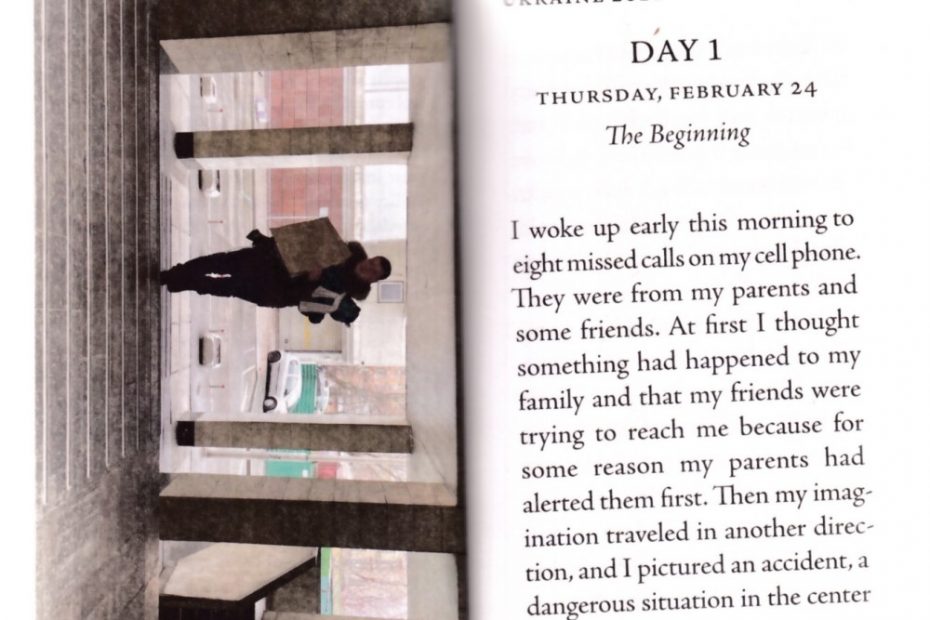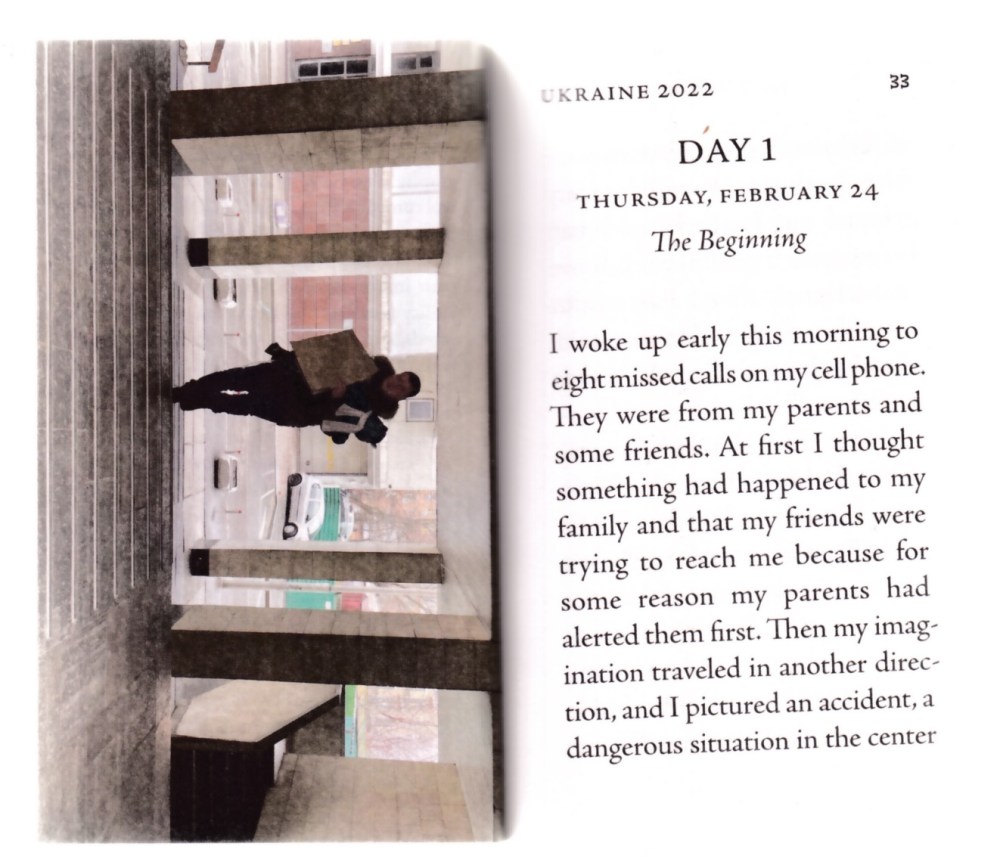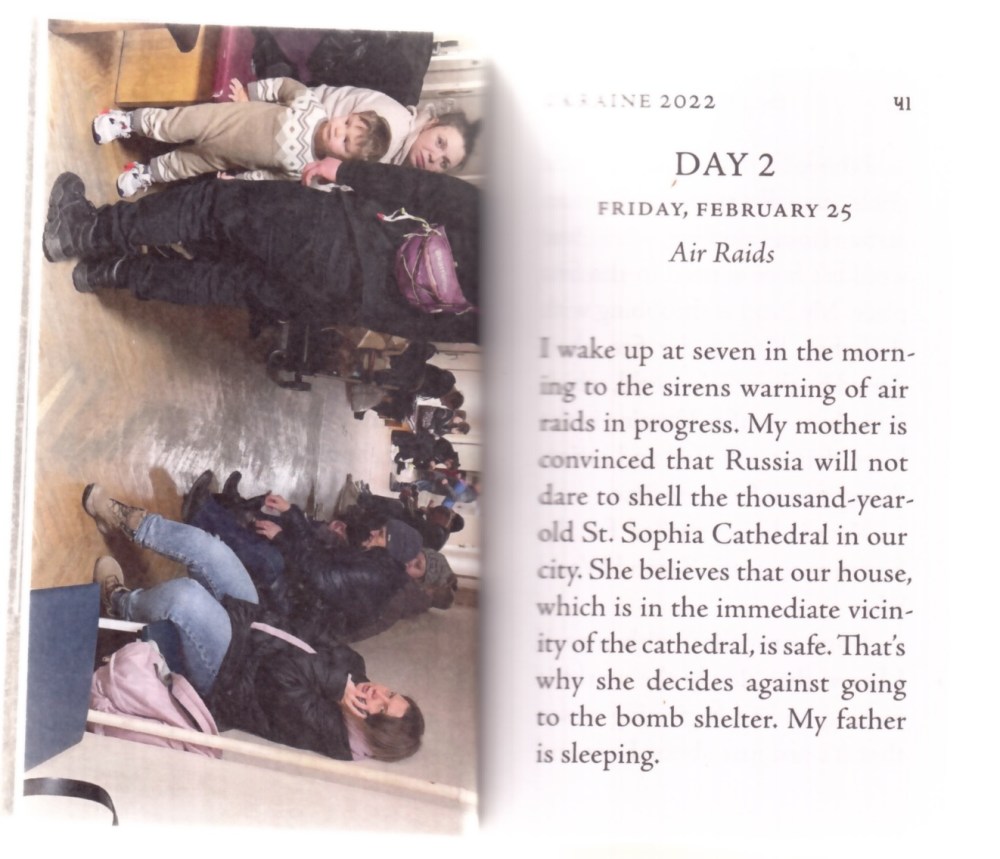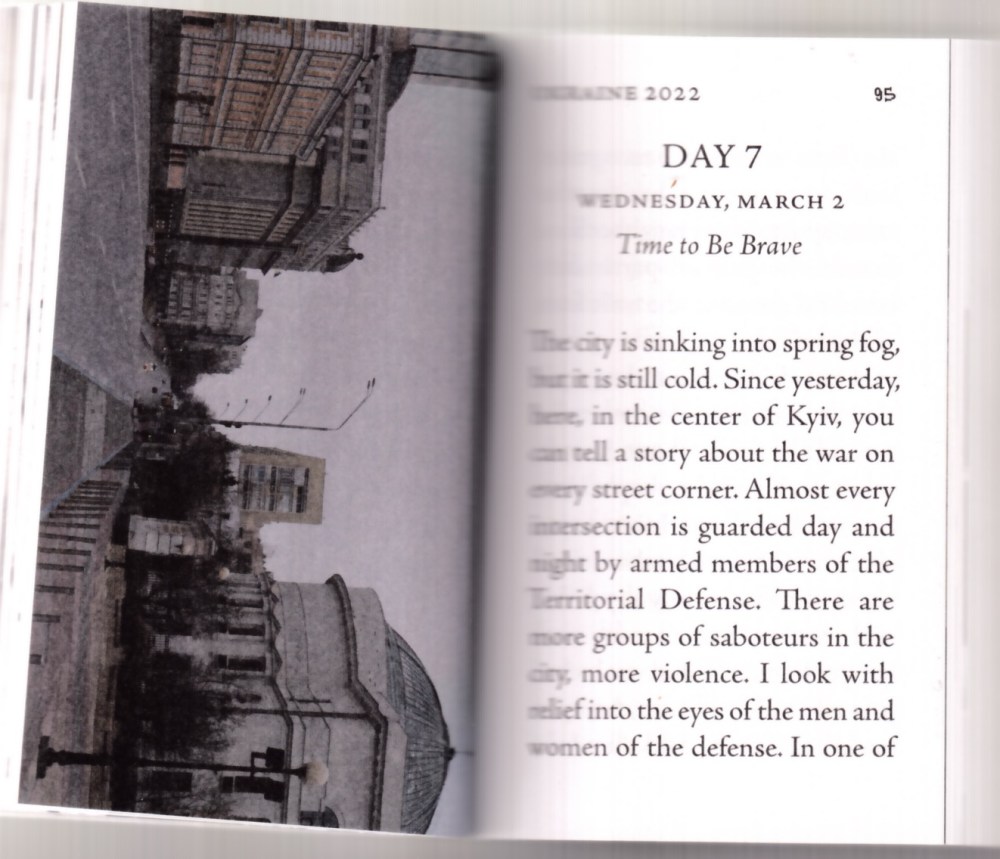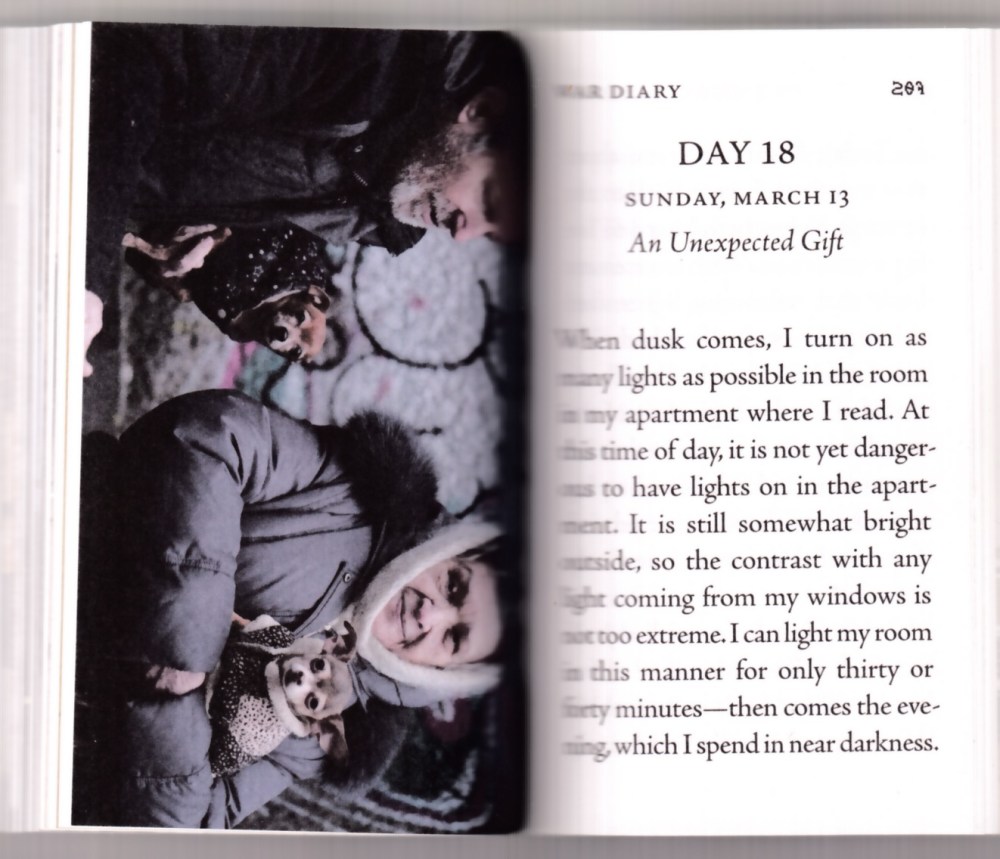Reading In the Face of War, Ukraine 2022 by Yevgenia Belorusets, with artwork by Nikita Kadan and Lesia Khomenko, I recall a moment when, as a young child playing in the surf of an idyllic ocean beach, I was swallowed up by an unexpected undertow. I can still vividly feel the pull, see, hear and taste the womb-like wave in which I was trapped for what seemed like an eternity. Although I had never experienced this sensation before, I believed there was no escape and saw my death occurring in slow motion.
The terror of being dragged into the sea is, however, nothing like the shock of being engulfed in a brutal tsunami of bombardment by an invading hoard. Yet it is as close as I could come to personally relating to Belorusets’ eloquently written yet nonetheless horrifyingly quotidian diary, which was originally produced in real time from Kyiv as a digital journal.
It was published as a book to coincide with “This is Ukraine: Defending Freedom” at the 59th International Art Exhibition, La Biennale di Venezia by isolarii, “a new kind of media company by and for the global avant-garde; producing creative works in novel ways, the aim is to provide points of orientation in a deteriorating world.” It is one volume in isolarii‘s series of books (designed by Ben Ganz with Chase Booker), issued to subscribers only. As the series editors, Sebastian Clark and India Ennenga, explain: “isolarii revives an extinct literary genre, the Renaissance ‘island books’ of the same name. Together, they form an archipelago of today’s avant-garde movements and figures.”
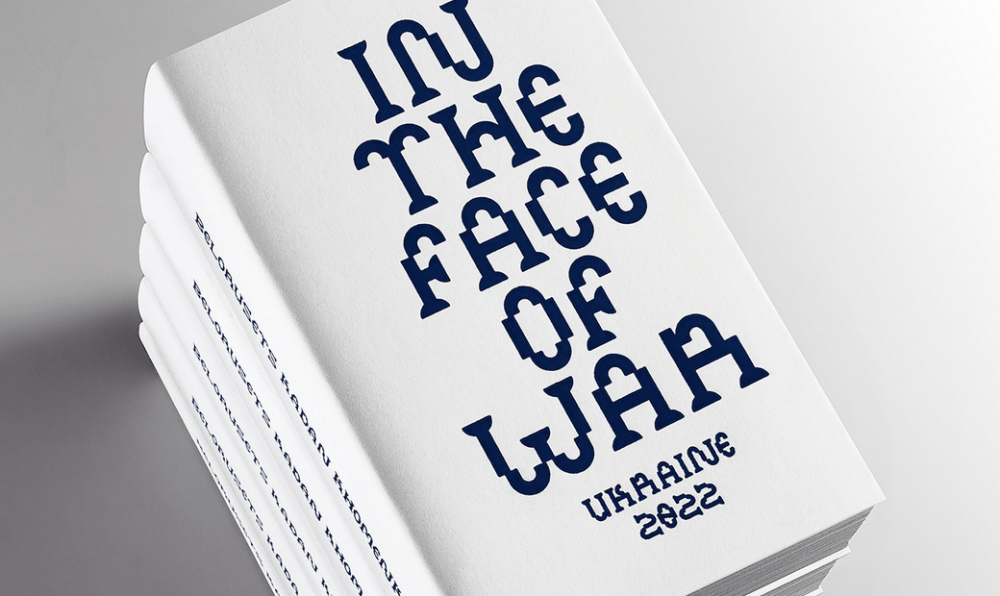
The books are the size of a breast pocket and come in varying lengths. In the Face of War is numbered at 444 pages. Although the dimension and binding make it challenging to turn the pages, the effort is always rewarded. In the Face of War captured my attention with every image and word. Belorusets’ sentences and paragraphs grab the reader and don’t let go. As she writes on Day 11, March 6, “It is 3:30 and we’re still alive. These days, it’s hard to grasp tomorrow.” On Day 20, March 15: “In war one thinks almost always of war.” Even with the barrages of courageous news reporting coming out of Ukraine, I could not fully imagine the magnitude of the tragedy until reading this diary.
Apologies for the poorly scanned spreads below; they are offered as examples of the emotional strength of the author’s prose.
The purpose of the book is vivid from the first page. As Ennenga and Clark explain in an email:
“With Yevgenia, this was quite direct. She wanted to tell the news out of Kyiv from a different vantage. It was an attempt to record her fleeting memories and to describe what this historical break actually looked like in the matter of everyday life. When she began, she was certain that the war would be over within a week, and wrote with the intention that each entry would be the last. One of our readers described it as a kind of ‘daily prayer for peace.’
“We’d been working with Yevgenia for many years—she was the author of our fifth release, Modern Animal—and when the war began we were in touch with her all the time. When we heard she was writing a diary, we immediately offered to publish it. We translated it into English daily (she originally wrote in German for Der Spiegel) and sent it out as a newsletter.
“It had a swift and incredible impact: translated into 12 languages, reaching hundreds of thousands of readers daily, supported by Margaret Atwood, Miranda July and NPR, and eventually becoming a centerpiece at the 2022 Venice Biennale pavilion organized by the Office of the President of Ukraine. The other participants in the pavilion, Lesia Khomenko and Nikita Kadan, were close friends who, like Yevgenia, continue to live and work in Ukraine.
“So, as we were considering how best to publish the diary, we thought it was essential that the book include Lesia and Nikita’s work as well, to create a collective response to the war, in real time.”
